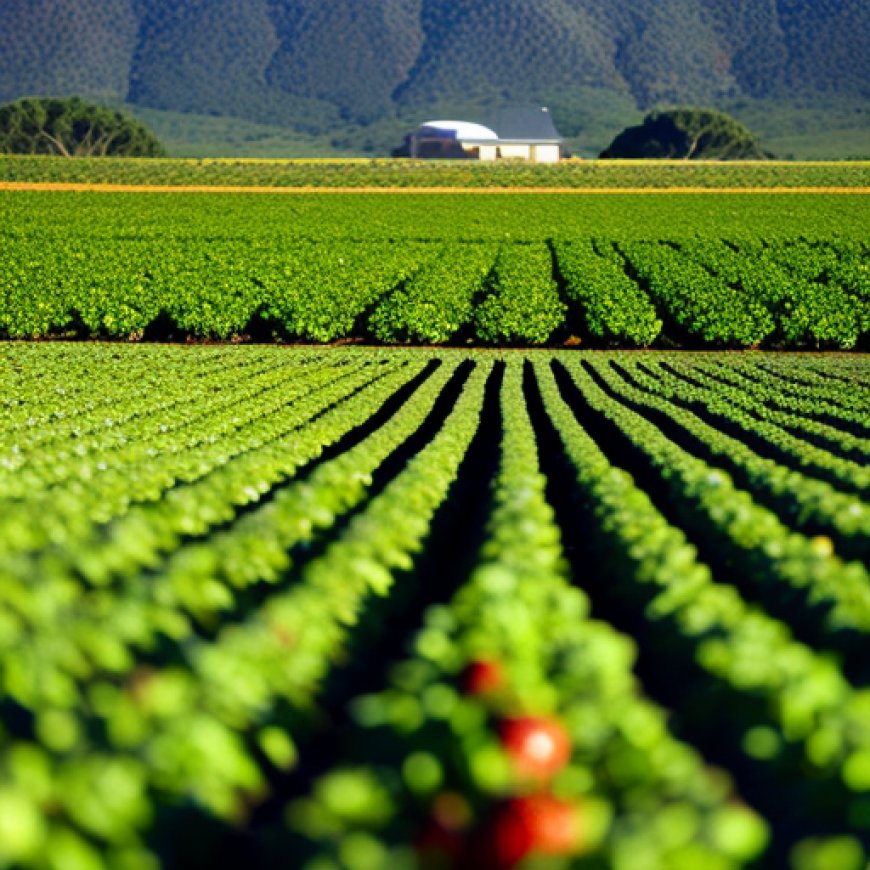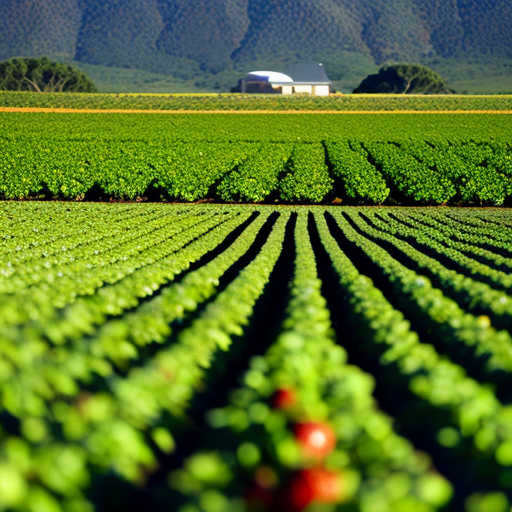Report: Santa Barbara County agricultural production at $1.9 billion value, strawberries hold top crop
Report: Santa Barbara County agricultural production at $1.9 billion ... KSBY News


Agriculture in Santa Barbara County

The agriculture industry is Santa Barbara County’s largest producing industry, with a gross production value of $1,930,445,000 in 2022, according to a report released by the Santa Barbara County’s Agricultural Commissioner’s Office on Wednesday.
Summary of Crop Production Report
The Santa Barbara County Agricultural Crop Production Report provides an overview of acreage, production, and gross value of agriculture in the county. In 2022, the industry experienced a 5.1% increase in value compared to 2021.
Top Crops in Santa Barbara County
- Strawberries: $810,923,000
- Cauliflower: $96,334,000
- Wine grapes: $96,330,000
- Nursery products: $95,318,000
- Lettuce, head: $94,640,000
- Broccoli: $93,370,000
- Lettuce, leaf: $85,790,000
- Celery: $67,410,000
- Avocado: $59,650,000
- Blackberries: $46,780,000
The top crop in the county is strawberries, with a value of $810 million. Cauliflower has become the second most valuable crop at $96.3 million and is the top vegetable crop for 2022. The demand for cauliflower-based products has increased during the pandemic. Wine grapes decreased in value by 8.4%. The Nursery category decreased by 20% due to labor shortages and foreign competition.
Impact of Sustainable Development Goals (SDGs)
The agriculture industry in Santa Barbara County plays a significant role in achieving the Sustainable Development Goals (SDGs). It contributes to Goal 2: Zero Hunger by providing food security and promoting sustainable agriculture. Additionally, it supports Goal 8: Decent Work and Economic Growth by creating employment opportunities. The industry also contributes to Goal 12: Responsible Consumption and Production by promoting sustainable farming practices and reducing waste.
Other Highlights
Livestock, apiary, field, and seeds crops saw increases of 8.7%, 9.1%, and 8.5%, respectively. The county’s cannabis industry produced a total crop value of just over $260 million, which is not included in the county’s total production value. Livestock had a total value of $40.96 million, with cattle comprising the majority of the value at $29.37 million.
Export Market
Canada is Santa Barbara County’s top export country based on the number of phytosanitary certificates issued.
Trends and Future Projections
The agriculture industry in Santa Barbara County has seen a nearly 27% increase in value since 2018, producing $1.52 billion that year. The gross production value of the agriculture market in the U.S. is projected to be $298 billion in 2023, according to Statista.
Conclusion
The Santa Barbara County Agricultural Crop Production Report highlights the importance of the agriculture industry in the county’s economy. It showcases the significant contribution of various crops and their alignment with the Sustainable Development Goals. The report serves as a valuable resource for stakeholders and policymakers in understanding the current state and future prospects of agriculture in Santa Barbara County.
The full 2022 report, along with previous reports dating back to 1916, can be accessed online at countyofsb.org.
SDGs, Targets, and Indicators
1. Which SDGs are addressed or connected to the issues highlighted in the article?
- SDG 2: Zero Hunger
- SDG 8: Decent Work and Economic Growth
- SDG 12: Responsible Consumption and Production
- SDG 15: Life on Land
2. What specific targets under those SDGs can be identified based on the article’s content?
- SDG 2.3: By 2030, double the agricultural productivity and incomes of small-scale food producers, in particular women, indigenous peoples, family farmers, pastoralists, and fishers, including through secure and equal access to land, other productive resources and inputs, knowledge, financial services, markets, and opportunities for value addition and non-farm employment.
- SDG 8.6: By 2020, substantially reduce the proportion of youth not in employment, education or training.
- SDG 12.3: By 2030, halve per capita global food waste at the retail and consumer levels and reduce food losses along production and supply chains, including post-harvest losses.
- SDG 15.1: By 2020, ensure the conservation, restoration, and sustainable use of terrestrial and inland freshwater ecosystems and their services, in particular forests, wetlands, mountains, and drylands, in line with obligations under international agreements.
3. Are there any indicators mentioned or implied in the article that can be used to measure progress towards the identified targets?
- Indicator 2.3.1: Volume of production per labor unit by classes of farming/pastoral/forestry enterprise size.
- Indicator 8.6.1: Proportion of youth (aged 15-24 years) not in education, employment, or training.
- Indicator 12.3.1: Food loss index.
- Indicator 15.1.1: Forest area as a proportion of total land area.
Table: SDGs, Targets, and Indicators
| SDGs | Targets | Indicators |
|---|---|---|
| SDG 2: Zero Hunger | 2.3: By 2030, double the agricultural productivity and incomes of small-scale food producers, in particular women, indigenous peoples, family farmers, pastoralists, and fishers, including through secure and equal access to land, other productive resources and inputs, knowledge, financial services, markets, and opportunities for value addition and non-farm employment. | 2.3.1: Volume of production per labor unit by classes of farming/pastoral/forestry enterprise size. |
| SDG 8: Decent Work and Economic Growth | 8.6: By 2020, substantially reduce the proportion of youth not in employment, education or training. | 8.6.1: Proportion of youth (aged 15-24 years) not in education, employment, or training. |
| SDG 12: Responsible Consumption and Production | 12.3: By 2030, halve per capita global food waste at the retail and consumer levels and reduce food losses along production and supply chains, including post-harvest losses. | 12.3.1: Food loss index. |
| SDG 15: Life on Land | 15.1: By 2020, ensure the conservation, restoration, and sustainable use of terrestrial and inland freshwater ecosystems and their services, in particular forests, wetlands, mountains, and drylands, in line with obligations under international agreements. | 15.1.1: Forest area as a proportion of total land area. |
Behold! This splendid article springs forth from the wellspring of knowledge, shaped by a wondrous proprietary AI technology that delved into a vast ocean of data, illuminating the path towards the Sustainable Development Goals. Remember that all rights are reserved by SDG Investors LLC, empowering us to champion progress together.
Source: ksby.com

Join us, as fellow seekers of change, on a transformative journey at https://sdgtalks.ai/welcome, where you can become a member and actively contribute to shaping a brighter future.







